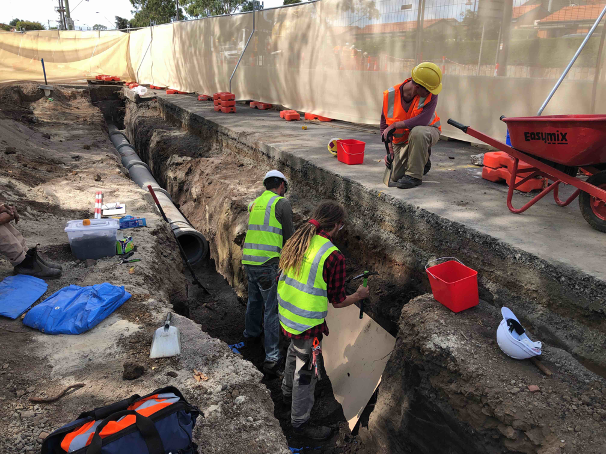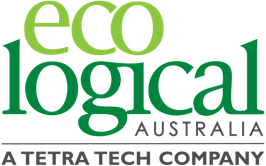How to navigate finding Aboriginal ancestral remains on a project site and why collaboration is the key ingredient to a seamless project
Tuesday, 23 June, 2020
On a large-scale project, like building a bridge on the Princes Highway, time and money matter and the discovery of Aboriginal ancestral remains could throw a project off course. Not so on this particular job thanks to a solid plan and the approachable expertise of Principal Heritage Advisor, Dr. Mike Green.
Major Road Projects Victoria (MRPV) was constructing a new bridge across Barongarook Creek in Colac, south-western Victoria, near the location of an earlier discovery of Aboriginal ancestral remains in 1990. Due to the earlier discovery, the Cultural Heritage Management Plan (CHMP) prepared for the bridge project included a contingency in case additional ancestral remains were found.
When the discovery of Aboriginal ancestral remains did eventuate, Mike’s role on site was to assist the three main stakeholders – MRPV (the project owner), VEC Civil Engineering (the contractor), and the Eastern Maar Aboriginal Corporation (the Traditional Owner group responsible for the ancestral remains) – to navigate their way through the following stages post-discovery. The Eastern Maar had previously worked with Mike and developed a great relationship with him, and so they requested that Mike should be the archaeologist on this project. He arrived the next day.

[Ancestral remains being excavated on the Princes Highway]
Mike undertook as much archaeological investigation as possible to find out the condition and circumstances of this person’s death and burial. Was there a grave? How was the body positioned? Were the ancestral remains from a man, a woman or a child? The Eastern Maar needed to know these things as the information would help them to make an informed decision about what should happen to the ancestral remains. Based on the positioning of the body, the condition of the remains and radiocarbon dating of the earlier burial found in 1990, Mike concluded that the ancestral remains were those of an adult man around 40 to 50 years of age at the time he died around 300-500 years ago, and that he had lived a very active lifestyle. Based on Mike’s findings, the Eastern Maar decided to excavate and recover the remains.
While his role was to advise them about what was there archaeologically and how to deal with it, there’s an additional aspect to engagement with Aboriginal communities in these situations. “We have to always acknowledge that we are dealing with someone’s ancestors” Mike explains, “and showing a little bit of humanity goes a long way. It’s about respect – respect for the ancestral remains, respect for the Traditional Owners, and respect for the situation and the need to make difficult decisions that responded to the dual interests of the client and the community”.
Mike’s wealth of 30 years’ experience investigating Indigenous ancestral remains spans across the country and up into Papua New Guinea; “it doesn’t matter which group you talk to anywhere in the world, a site with ancestral remains is one of the highest significance places you can come across”.

[Mike Green working at Papua New Guinea in 2014]
VEC’s onsite HSSE Manager Jodie Colls is a proud Kuku Yalanji man from far north Queensland. Once the remains were discovered, VEC told Jodie to “down tools” and that his sole job going forward was to help the Eastern Maar do whatever they needed to do in order to resolve any issues or concerns and help get to a resolution about the burial. VEC’s Project Director, Owen Cavanough, is a Wiradjuri man from New South Wales, and he made sure that Jodie was the liaison for the project and that he was available to the Eastern Maar 24/7. While VEC’s role in the project was very much to a timeline; protecting significant cultural heritage such as this always comes first, particularly when people within the team are connected to that culture.
The plans are now to rebury the remains. The bridge has been constructed and the project completed. Major Road Projects Victoria has accounted for a section of the new site to be a dedicated commemorative space for any reburial and to remain a sacred site.
The critical element that made this project successful was collaboration, respect and good processes. All parties understood what their rights and responsibilities were. MRPV and VEC both listened to the Eastern Maar and with an understanding of the nature and importance of the advice and direction given to them. “If you get goodwill at the outset and a clear understanding of roles and responsibilities then it will go swimmingly. The management conditions, the contingencies, the reporting processes, the decision making – it all just worked.” says Mike.

[Workers on site during a smoking ceremony and learning about the significance during the project]
